Big orange ball
What is this, do you think? Electron microscope photo of pollen? Infrared tennis ball? Mars? The inside of a baseball?
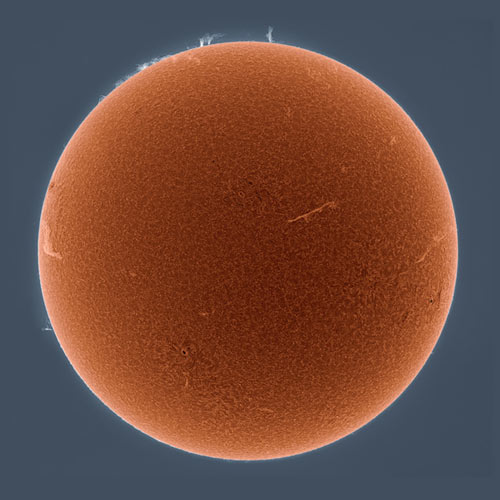
It’s actually a photo of the Sun taken at the H-alpha wavelength by an amateur astronomer.



This site is made possible by member support. 💞
Big thanks to Arcustech for hosting the site and offering amazing tech support.
When you buy through links on kottke.org, I may earn an affiliate commission. Thanks for supporting the site!
kottke.org. home of fine hypertext products since 1998.
What is this, do you think? Electron microscope photo of pollen? Infrared tennis ball? Mars? The inside of a baseball?

It’s actually a photo of the Sun taken at the H-alpha wavelength by an amateur astronomer.
Slideshow of almost 100 years of photography of the NYC subway system by the NY Times.
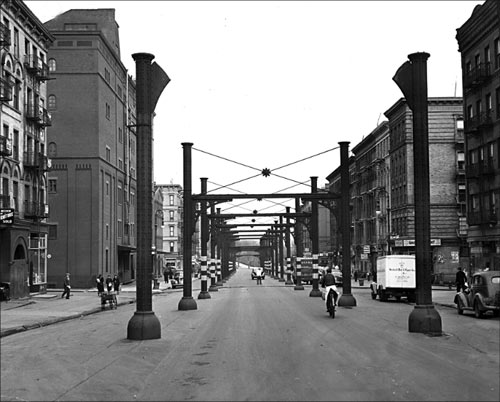
The caption for the photo above reads:
1940: In a view north from 106th Street, only the supports of the old Ninth Avenue elevated line remained as the push to go underground continued.
Vanity Fair photo shoot? Check.
Zach Galifianakis? Check.
Red ladies bathing suit? Sweet Jesus.
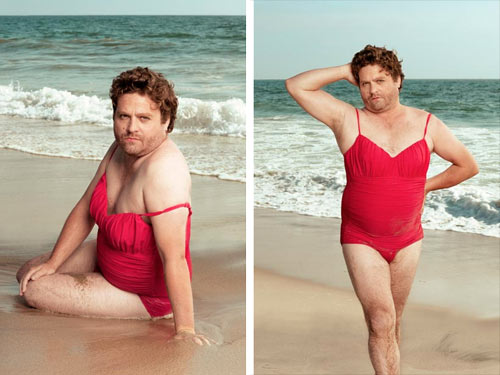
For his The Value of a Dollar project, Jonathan Blaustein took photographs of the amount of food he could purchase for a dollar.
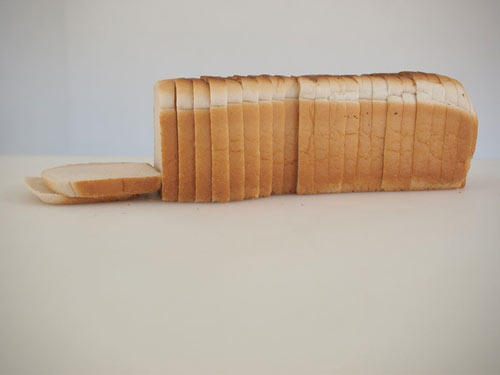
From an interview at the NY Times’ Lens blog:
It was a cheeseburger that initially encouraged Mr. Blaustein, 36, to pursue his project, “The Value of a Dollar.” When the economy was in the midst of its downward spiral, he visited a fast-food chain in New Mexico, where he lives. “On one menu they had a cheeseburger for a dollar,” he said. What caught his eye, though, was another menu, which featured a double cheeseburger for the same price. That additional piece of meat, and the extra slice of cheese, somehow didn’t change the price.
This is the massive drill that was used to bore a 35-mile-long tunnel underneath the Alps from mid-Switzerland to near the Italian border:
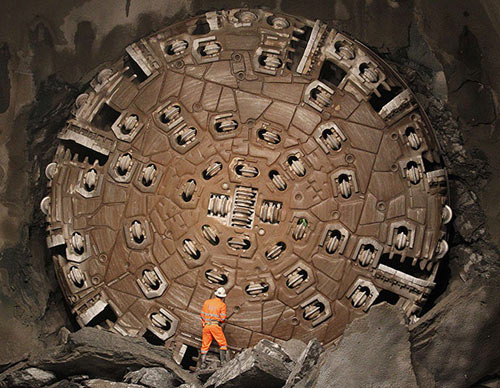
Boring operations in the east tunnel were completed on 15 October 2010 in a cut-through ceremony broadcast live on Swiss TV. When it opens for traffic in late 2017, the tunnel will cut the 3.5-hour travel time from Zurich to Milan by an hour and from Zurich to Lugano to 1 hour 40 minutes.
The Big Picture has a selection of photos of the National Ignition Facility which I’ve written about previously.
“Creating a miniature star on Earth” is the goal of the National Ignition Facility (NIF), home to the world’s largest and highest-energy laser in Livermore, California. On September 29th, 2010, the NIF completed its first integrated ignition experiment, where it focused its 192 lasers on a small cylinder housing a tiny frozen capsule containing hydrogen fuel, briefly bombarding it with 1 megajoule of laser energy. The experiment was the latest in a series of tests leading to a hoped-for “ignition”, where the nuclei of the atoms of the fuel inside the target capsule are made to fuse together releasing tremendous energy — potentially more energy than was put in to start the initial reaction, becoming a valuable power source.
The NIF and the LHC are this generation’s Apollo program.
Love this. In 1936, a 16-year-old Dutch girl played a shooting gallery game at the fair: hit the target and a camera takes a photo, which the girl receives as a prize. Almost every year between then and now, Ria van Dijk shot the target and got her prize.

Van Dijk is now 88 and still shooting.
The Big Picture has a selection of photos of the rescue of the Chilean miners. Here’s some video of the first few miners being rescued:
As I write, 17 of the 33 miners have been rescued.
Vanity Fair has excerpts (photos mostly) of a new book on the making of The Empire Strikes Back.
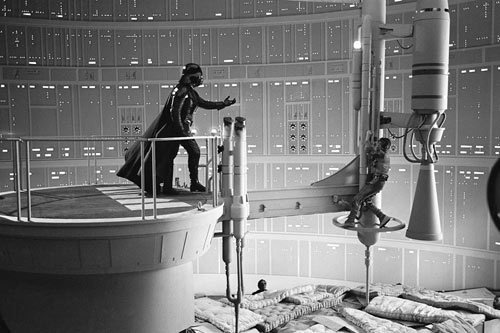
This is right before Luke fell to his death sleep. (via df)
Cassandra Jones takes photographs she finds online and stiches them together to form animations like this Eadweard Muybridge homage:
Really nice. Jones’ other work is worth a look as well. (via heading east)
Photographer Phillip Toledano didn’t particularly want to be a father. But then he and his wife had a daughter.
Loulou seemed like such an alien thing, that the first time I heard her sneeze, I was filled with joy.
It was the first human thing I’d seen her do that made any sense to me.
Imagine listening to someone speaking a foreign language, and then suddenly you hear the word “McDonald’s.”
I was somewhat of a reluctant father as well. I think it’s ok to feel that this stranger in your life maybe isn’t the greatest thing ever. Newborns are hard; you do feel like chucking them out the window at times. Your interaction with others, especially with your spouse, becomes weird and one-sided and not at all about your needs and desires. But that’s how it is…you fake it ‘til you make it. Of course, I love my kids to pieces now and it’s difficult to remember when that wasn’t the case.
This little guy is a newborn uncontrolled nuclear fisson reaction. You know, an atomic bomb.
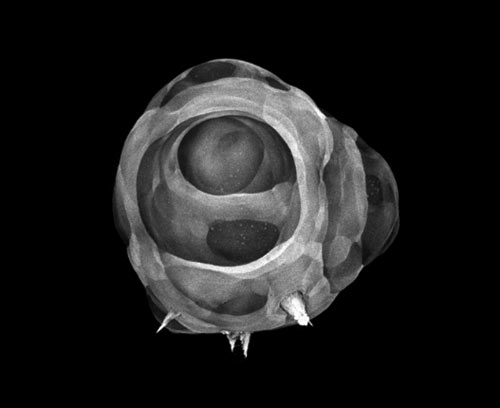
This is from a NY Times photo slideshow of atomic bomb explosions. Check out the school bus sequence starting at slide #14.
Rosmarie Fiore did this series of long exposure photographs of Atari games a few years ago.
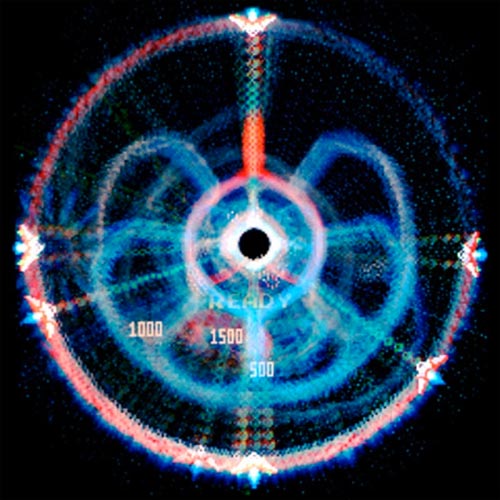
Fiore did a similar project with pinball machines…instead of photos, the ball was covered in paint and left trails on vellum. Reminds me of some of the other time merge media I collected awhile back. (via @brainpicker)
From a typically excellent selection of photos taken from space curated by Alan Taylor over at The Big Picture, there’s this:

I don’t know why, but that freaks me right out. THERE’S A FREAKING HOLE IN THE MOON!!
Photographer Adam Magyar uses scanner cameras to take these huge panoramic photos which are a little difficult to explain.
Adam uses the same technologies as the finish line cameras at the Olympic Games, which take thousands of images a second and records through a 1 pixel wide slit. The time and space slices are then placed next to one another to generate an image without perspective. This method is capable of recording movement only, with static objects and buildings appearing as stripes and lines.
Here’s just a small slice of one of his photos…you’ll notice that it does look an awful lot like the photo-finish photos of sprinters.
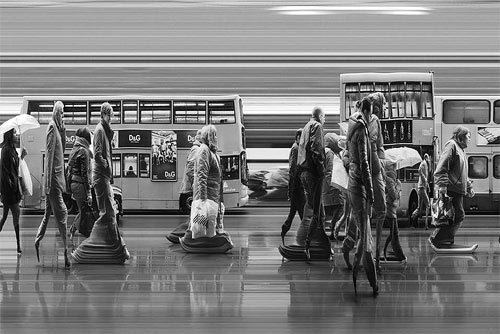
(via lens culture)
Nick Gleis shoots the interiors of corporate jets owned by African dictators and other heads of state. I couldn’t decide which jet interior was the gaudiest, but this one is definitely a contender because of the classy naked ladies on the wall of the bedroom.

Who knew that African dictators were so nostalgic for the set design of Star Trek: The Next Generation?
Wonderful close-up photography of eyes by Suren Manvelyan. Like really close-up:
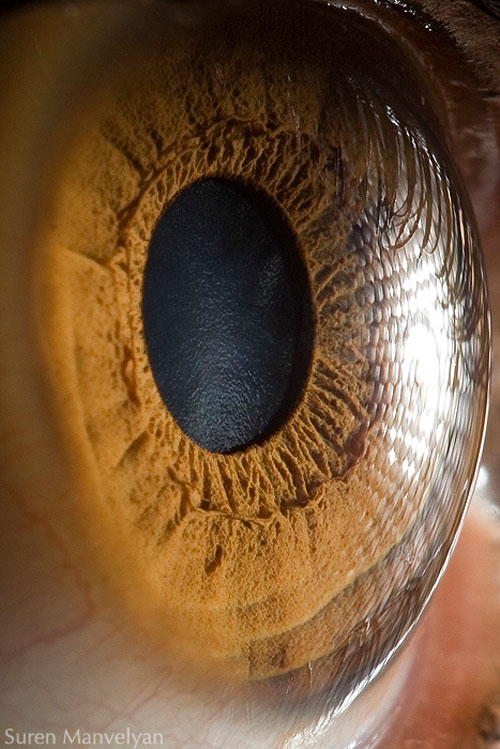
Is that a tiny lake in there? I am going to have dreams about that one tonight. (via df)
Taryn Simon spent five days photographing items confiscated from people flying into New York’s JFK airport. This one is “mystery meat”:
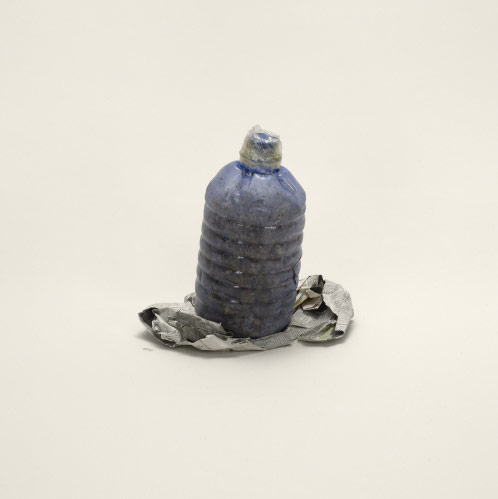
These images are from a set of 1,075 photographs — shot over five days last year for the book and exhibition, “Contraband” — of items detained or seized from passengers or express mail entering the United States from abroad at the New York airport. The miscellany of prohibited objects — from the everyday to the illegal to the just plain odd — attests to a growing worldwide traffic in counterfeit goods and natural exotica and offers a snapshot of the United States as seen through its illicit material needs and desires.
Here’s more about the project, which will be released in book form and also put on display in galleries in LA and NYC.
The Asia Society has an exhibition of photos taken of Himalayan glaciers as early as 1899 paired with photos taken more recently from the same vantage points. The differences are stark. Be sure to check out the Comparative Photography section to get a sense of the scale involved. More photos at the NY Times Lens blog.
Some photos of the production line at the Real Doll factory.
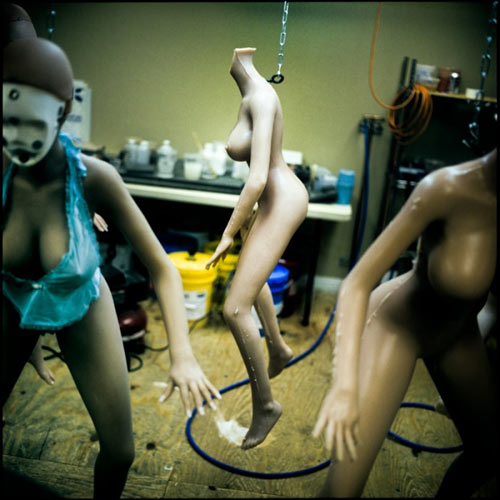
NSFW, probably. There is also a short documentary on Vimeo about the manufacturing process:
Golan Levin and Kyle McDonald took some old code for converting between polar and cartesian geometries and hacked it to flatten out photos of flowers into panoramic landscapes.


Polar-to-cartesian unwrapping of flower photographs is the new flattening flowers between the pages of books. The Processing source code is available. NotCot applied the effect to chandeliers. I dorked around in Photoshop a little and you can get similar results using the “Polar Coordinates” filter…you just have to stretch out the image first. (via today and tomorrow)
From Oobject, a collection of “first” images: the first color photograph, the first photo taken in space, the first x-ray image, the first image of a molecule, etc.
Possible clues have emerged that Eadweard Muybridge may not have taken all the photographs attributed to him.
Naef explains why he thinks that stereographs attributed to Muybridge were in fact taken by Watkins, who sold the negatives to Muybridge. Muybridge then printed and sold them under his own name. “I think from what I’ve seen and knowing what I know about Muybridge - and I’m not an expert on Watkins by any mean and Weston is - I think yes Muybridge published pictures by other people,” Brookman said. “Some by Watkins potentially, but I think Muybridge was also a photographer and a significant photographer.”
Tyler Green of Modern Art Notes has a three-part interview with photography curator Weston Naef about why he thinks this is so. Part one is here. (No word yet on why Muybridge has so many unnecessary letters in his name.)
I’ve probably posted these before but they’re still neat: iconic photographs recreated in Lego.

The original version of the above can be seen here. (via @matthiasrascher)
Frustrated with the carefully chosen photos of Africans “dressed in rags, smothered in flies, with [looks] of desperation” used to symbolize poverty by development organizations, Duncan McNicholl has started a photography project in which he takes two photos of a person: one in a typical poverty pose and the other with the person “looking their very finest”.
The truth is that the development sector, just like any other business, needs revenue to survive. Too frequently, this quest for funding uses these kind of dehumanizing images to draw pity, charity, and eventually donations from a largely unsuspecting public. I found it outrageous that such an incomplete and often inaccurate story was being so widely perpetuated by the organizations on the ground — the very ones with the ability and the responsibility to communicate the realities of rural Africa accurately.
Locals and Tourists is a set of maps showing where people take photos in various cities around the world. The results are broken down into tourist photos and photos taken by locals. Here’s NYC:
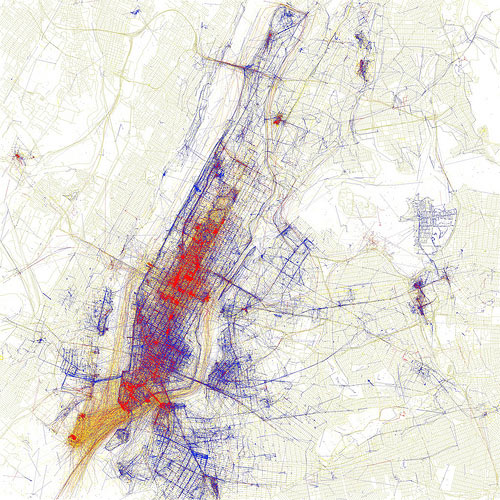
Blue points on the map are pictures taken by locals (people who have taken pictures in this city dated over a range of a month or more). Red points are pictures taken by tourists (people who seem to be a local of a different city and who took pictures in this city for less than a month).
Pictory has a slideshow up of New York City photos. Design by Nicholas Felton, photos curated by Josh Haner of the New York Times Lens blog.
A selection of photos of objects that look like Tetris pieces.
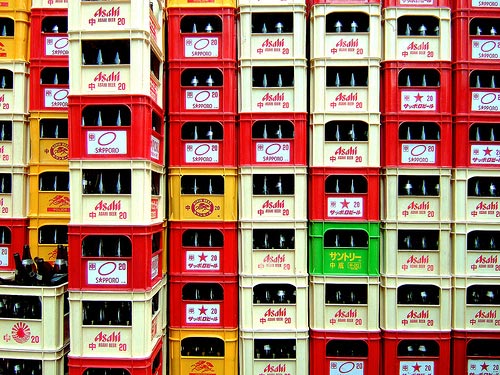
(via flickr blog)
The Big Caption is a companion site of sorts for The Big Picture “wherein jokes and statments are made using typography”. A representative sample:
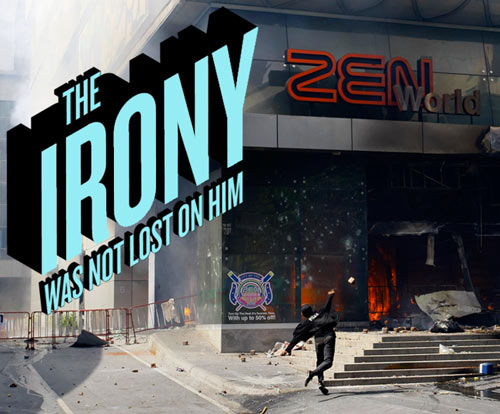
Stay Connected